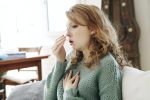Scleroderma-related Autoantibodies Common in Sjögren’s Cases: Study

Self-targeting antibodies typically associated with a scarring disease called scleroderma are commonly found in people with Sjögren’s syndrome and may be useful in a diagnostic workup of those who have unexplained dryness of the eyes and mouth.
That’s according to a study published in Seminars in Arthritis and Rheumatism titled, “Scleroderma-specific autoantibodies: Should they be included in the diagnostic work-up for Sjögren’s syndrome?”
“Although our observations must be confirmed in larger cohorts, we propose that testing for [scleroderma]-specific autoantibodies could be a useful tool in the diagnostic work-up and potentially in future classification criteria for” Sjögren’s, its researchers wrote.
Scleroderma is a disorder marked by the over-production of scar tissue, resulting in thick, hardened skin. Although its causes are poorly understood, many patients test positive for self-targeting antibodies (autoantibodies), proteins made by the immune system that erroneously direct an immune attack against the body’s healthy tissue.
Several different types of scleroderma-associated autoantibodies have been reported (e.g., anti-centromere, anti-topoisomerase I, and anti-RNA-polymerase III). While these autoantibodies are generally characteristic of scleroderma, there have been reports of people with Sjögren’s syndrome who test positive for them.
Scientists in Greece looked for scleroderma-associated autoantibodies in 216 people receiving a diagnostic workup for sicca — dry mouth and eyes, the most common symptom of Sjögren’s. Diagnostic criteria for Sjögren’s were fulfilled in 88 patients.
Among the 216 people with sicca, the overall frequency of scleroderma-specific autoantibodies was 41.7%. Specifically, 19% had high titers (antibody levels), while 22.7% had medium titers of these antibodies.
Patients with high scleroderma autoantibody titers were more than four times as likely to be positive for immune infiltrates in a biopsy of the salivary gland — a common diagnostic feature of Sjögren’s — statistical analyses showed.
This association remained statistically significant after adjusting for the presence of anti-Ro/SSA and anti-La/SSB autoantibodies, which are typically found in people with Sjögren’s syndrome. This implies “a potentially contributory role of these antibodies in [Sjögren’s] classification,” according to the researchers.
There was no connection between medium scleroderma-related autoantibody titers and salivary gland biopsy results.
“The presence of [scleroderma]-specific autoantibodies at strong titers in sicca patients is the sole non-invasive modality so far shown to be independently associated to MSG [minor salivary gland] biopsy positivity irrespective of the presence of” other Sjögren’s-associated autoantibodies, the researchers wrote.
“Theoretically, if [scleroderma]-specific antibodies had the same weight as anti-Ro/SSA antibodies in the classification criteria for [Sjögren’s], almost one third of anti-Ro/SSA negative patients with either negative or unavailable MSG biopsies would be classified” as having Sjögren’s, they said.
The research team noted that salivary gland biopsies were not available for all patients, which was a major limitation of the study.







